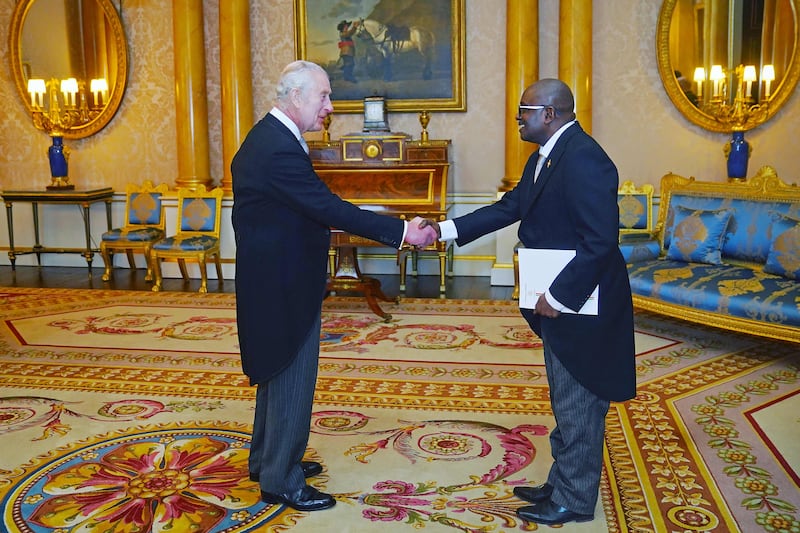Cancer patients have powerful reasons to shut themselves away when they receive their diagnosis but for King Charles III and Kate, Princess of Wales, the royal imperative of having to be seen to be believed has put them in the public eye as they fight the disease.
Improvements in survival rates and side effects from treatment enable them to open up to the public in a way that would have been more difficult in previous eras.
King Charles's cancer condition was discovered following unrelated treatment for an enlarged prostate. The Princess of Wales's cancer, which she revealed in a video message last week, was diagnosed following abdominal surgery which took place in January.
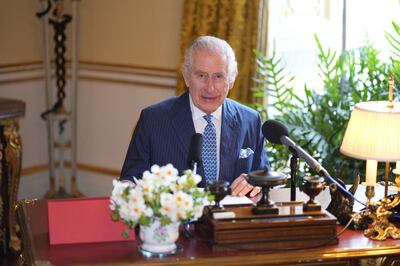
It is not known which type of cancer they have, but the survival rates have improved significantly in recent years across many forms.
Take for example the recent developments in delivering personalised treatments, an area experts believe holds a lot of promise.
“A big part of future medicine is trying to figure out, before you start the treatment, can we see something in this person’s genes or in a deep analysis of a person’s scans, or something that tells us that this individual [would respond well to a specific treatment],” Joe O'Sullivan, a clinical oncologist specialising in prostate cancer at Queen’s University Belfast, told The National.
“There have been a lot of recent publications comparing cancer care and outcomes now with 30 years previously and it’s a huge difference. For many cancers it’s a 40 or 50 per cent reduction in mortality.”
The improvement is due to many factors, including earlier diagnosis due to more advanced technologies, better techniques for taking biopsies and advancements in radiotherapy, surgery and drug therapies.
“The way you treat most cancers is by a combination of surgery, chemotherapy and radiotherapy,” Prof Iain McNeish, chairman of oncology at Imperial College London and head of the cancer division at Hammersmith Hospital, told The National.
Surgery
Cancer treatment often begins with surgery. “Surgery's pretty self explanatory, you chop it out,” said Prof McNeish.
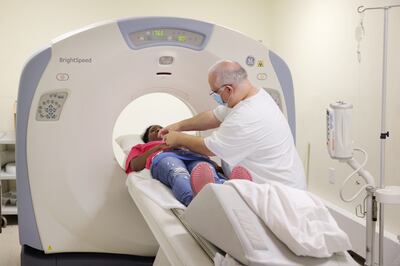
Chemotherapy
The Princess of Wales revealed that she is undergoing what she described as preventive chemotherapy, which is designed to kill any cancer cells left behind following surgery.
Chemotherapy was developed on the premise that cancer cells grow faster than normal cells, said Prof McNeish.
“So therefore if you can kill cells that grow quickly, you'll probably kill cancer cells,” he added.
It remains the backbone of a lot of cancer treatment and can be used to cure some forms of the disease.
Side effects can be unpredictable and severe, although they tend to depend on the type of chemotherapy given, and people react differently.
Many people associate it with hair loss and vomiting, but not all chemotherapy drugs cause a patient’s hair to fall out, said Prof McNeish.

“There’s a list of drugs that we know do cause hair loss. It usually takes three or four weeks after your first dose of chemotherapy, and then it will start growing back a month or two after the end of your chemotherapy,” he added.
It is sometimes possible to prevent hair loss by using a cold cap – a cap placed on the head which is wired up to a refrigeration machine to keep a person’s head cold while the chemotherapy is being administered.
“That can work quite well for some drugs but not all,” said Prof McNeish.
Chemotherapy can make people feel nauseous, but advances have been made in anti-sickness medication in recent years, which means it is not as much of a problem as it was.
The most common side effect of chemotherapy is fatigue.
“That's a challenging one because we don't really have very effective ways of preventing that,” said Prof McNeish. “All that we say to patients is that it will get better at the end. It does tend to get completely better.”
Immunotherapy
This drugs-based approach is designed to encourage a person’s immune system to attack a cancer and is based on the premise that some cancers find a way of hiding from the immune system.
“If we can stimulate the immune system, it will be able to see the cancer better and kill it,” said Prof McNeish.
It has “revolutionised” the management of several cancers, including melanoma, lung cancer, some types of bowel cancer and some types of endometrial cancer. It does not tend to work well on ovarian cancer or brain tumours.
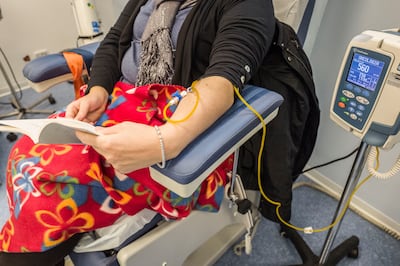
“We need to work harder to understand why that is,” Prof McNeish said. “What’s the interaction with the immune system in those cancers?”
When immunotherapy works, it often works for a long time, keeping cancer from returning.
Targeted drugs
Drugs like herceptin have been developed to target hereditary breast and ovarian cancers, which can be very effective.
“This series of drugs work very, very effectively in cancers that have mutations in BRCA one and BRCA two,” said Prof McNeish.
But experts working in the field are increasingly personalising cancer care by examining the type that a patient has, since no two patients have exactly the same. Each cancer has its own mutation pattern, which means it will respond better to some treatments. And there are already a lot of targeted therapies, said Prof O'Sullivan.
“Artificial Intelligence is helping with this. So the ideal scenario is you have patient A and patient B and we would say patient A, you should have a combination of radiotherapy and hormone therapy, for example. And patient B, hormone therapy is not going to work for you, so you need chemotherapy and surgery, perhaps.”
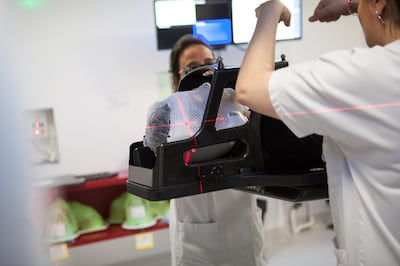
Radiotherapy
Radiotherapy treatment has probably improved the most in the past 30 years, said Prof O’Sullivan. For many cancers it is curative, and it can be used as an additional therapy.
Future treatments
A type of radiotherapy known as radioligand therapy holds particular promise for the future, said Prof O’Sullivan, by harnessing the power of radioactive atoms and delivering them to target cells anywhere in the body.
According to the Health Policy Partnership, a radioligand is made of two parts: a ligand, which can find cancer cells by seeking a particular surface molecule, and a radioisotope, which emits radiation to kill cancerous cells.
“The next 10 years are going to be an explosion of radioligand therapy,” said Prof O’Sullivan.
Antibody drug conjugates are another promising emerging therapy, which works by essentially gluing a chemotherapy drug to an antibody.
“The advantage of that is that the antibody binds to cancer cells exclusively, or almost exclusively,” said Prof McNeish.
“So the chemotherapy only gets delivered to the cancer cell and doesn't go everywhere else. And there have been a couple of very high-profile trials of antibody drug conjugates and the first ones are now starting to get approved for use worldwide and in the UK.
“There is great deal of excitement about those. Although they're delivering chemotherapy drugs, they're delivering them specifically to cancer cells, and therefore you can get higher doses and therefore you can kill more cancers off. So they're really exciting.”
